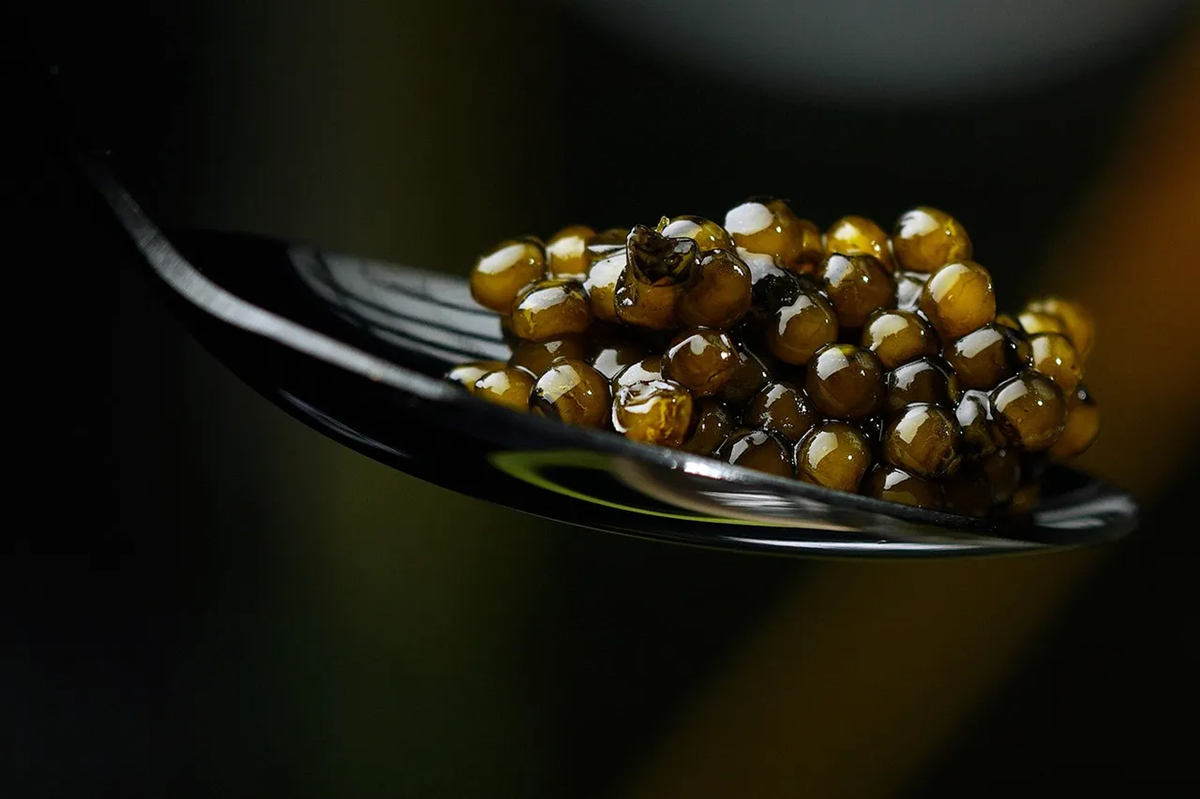The global caviar market is on an upward trajectory, with projections indicating significant growth in the coming years. In 2024, the market was valued at approximately $2.83 billion and is expected to reach $3.13 billion by 2025, representing a compound annual growth rate (CAGR) of 10.5%.  This robust expansion is attributed to several key factors:
- Increasing Consumer Demand: There is a growing appetite for luxury and gourmet food products among consumers worldwide. Caviar, with its rich taste and status symbol, has become a sought-after delicacy in both high-end restaurants and home dining experiences.
- Health Benefits Awareness: Caviar is rich in omega-3 fatty acids, vitamins A, B6, B12, and E, and essential minerals such as selenium and iron. These nutrients improve heart health, enhance cognitive function, and improve skin quality. As consumers become more health-conscious and seek out nutrient-dense foods, caviar is increasingly viewed as a premium product that can enhance overall wellness.
- Expansion of Aquaculture and Sustainable Practices: Overfishing and environmental concerns have led to a decline in wild sturgeon populations. In response, the industry has shifted towards aquaculture, with countries like China emerging as leading producers. This transition not only ensures a steady supply of caviar but also makes it more affordable and accessible to a broader audience.
For companies and intermediaries, these trends present opportunities to expand product lines, explore new markets, and invest in sustainable practices to meet the evolving demands of consumers.
Key Drivers Fueling Caviar Demand
Several factors are contributing to the rising demand for caviar globally:
- Culinary Prestige and Innovation: Caviar has transcended traditional fine dining and is now featured in a variety of culinary applications, from casual eateries to gourmet dishes. Chefs are incorporating caviar into innovative recipes, making it a versatile ingredient that appeals to a wide range of palates.
- Economic Growth and Rising Disposable Incomes: Emerging economies, particularly in the Asia-Pacific region, have experienced economic growth, leading to increased disposable incomes. This financial uplift enables more consumers to indulge in luxury food items like caviar, further driving market demand.
- Product Diversification and Accessibility: The caviar industry has seen a diversification of products, including the introduction of plant-based caviar alternatives. These innovations cater to a broader audience, including vegans and those seeking sustainable options, thereby expanding the consumer base.
Understanding these drivers allows companies and intermediaries to tailor their strategies effectively, ensuring they meet consumer expectations and capitalize on market growth.
Emerging Trends in Caviar Consumption
The consumption patterns of caviar are evolving, influenced by cultural shifts and industry innovations:
- Democratization of Caviar: Once exclusive to elite circles, caviar has become more accessible to the general public. This shift is due in part to increased production and reduced prices, allowing a wider demographic to experience this delicacy.
- Innovative Pairings and Casual Settings: Caviar is no longer confined to formal dining. It is now being paired with everyday foods and served in casual settings, reflecting a trend towards blending luxury with everyday experiences. This approach appeals to younger consumers seeking unique and approachable gourmet experiences.
- Sustainable and Ethical Consumption: Modern consumers are increasingly conscious of the environmental impact of their food choices. The caviar industry has responded by adopting sustainable farming practices and offering ethically sourced products, aligning with consumer values and enhancing brand loyalty.
For businesses in the caviar market, staying attuned to these trends is crucial. By embracing innovation, promoting sustainability, and making caviar more approachable, companies can attract a diverse customer base and drive growth in this evolving market.



Challenges in the Caviar Supply Chain
The caviar industry faces several challenges within its supply chain that can impact production and distribution:
- Limited Supply and Environmental Impact: Overfishing and habitat degradation have led to a significant decline in wild sturgeon populations, resulting in a limited supply of caviar. This scarcity raises production costs and necessitates strict regulatory frameworks to protect endangered species.
- Perishability and Storage Issues: Caviar’s delicate nature requires careful handling and has a limited shelf life. Producers often need to sell inventory quickly to prevent spoilage, which can lead to price volatility and financial pressures.
- Regulatory Compliance: The industry is subject to stringent regulations aimed at conserving sturgeon species and ensuring product quality. Navigating these complex legal requirements can be challenging for producers and distributors, impacting operational efficiency.
- Supply Chain Transparency: The opaque nature of seafood supply chains can facilitate illegal activities such as unregulated fishing and labor exploitation. Lack of transparency poses ethical and economic risks, potentially affecting up to $3 trillion in seafood-related assets and revenue.
Addressing these challenges requires a multifaceted approach, including investing in sustainable aquaculture practices, implementing advanced tracking technologies for better supply chain transparency, and adhering to international regulations to protect both the species




